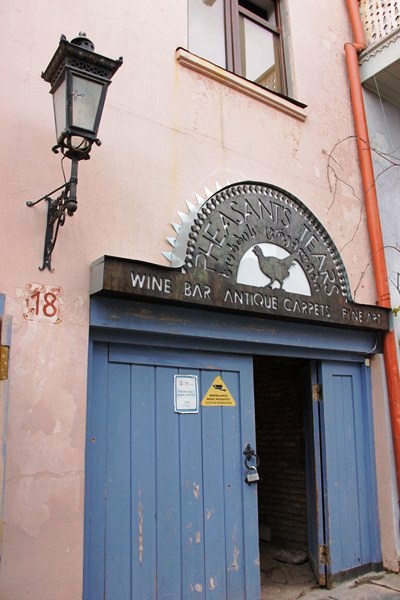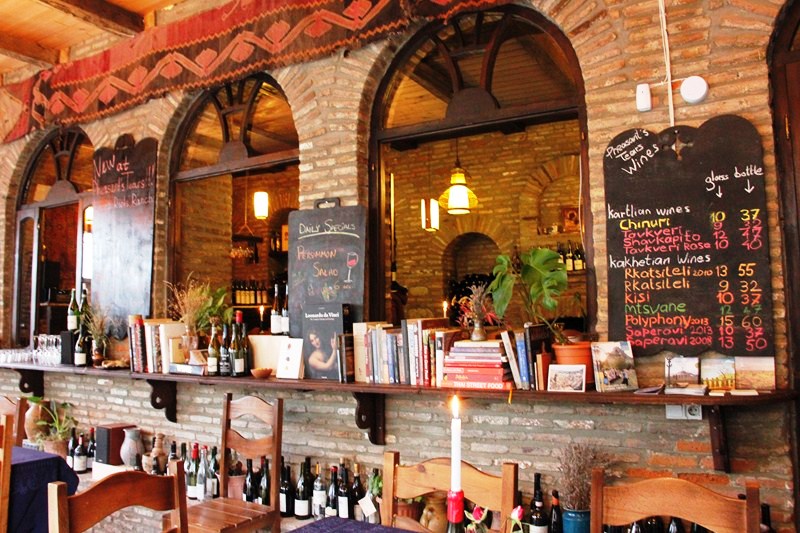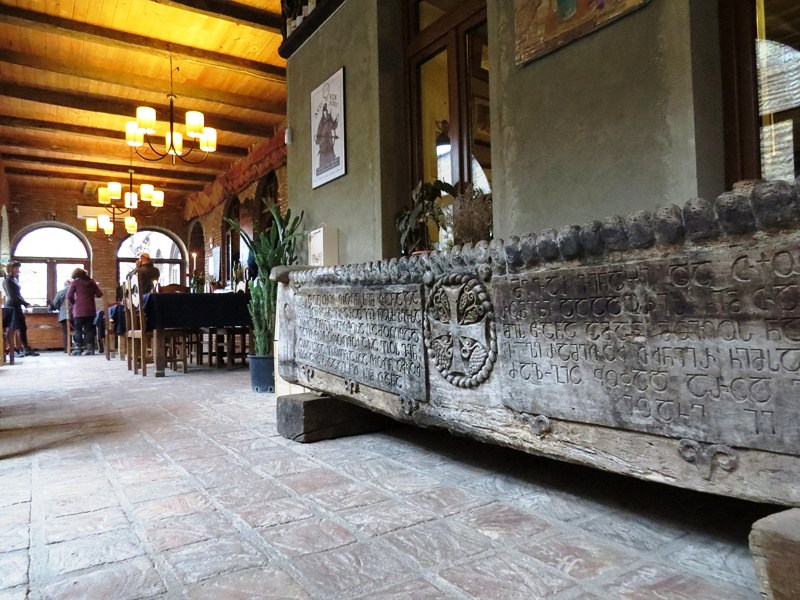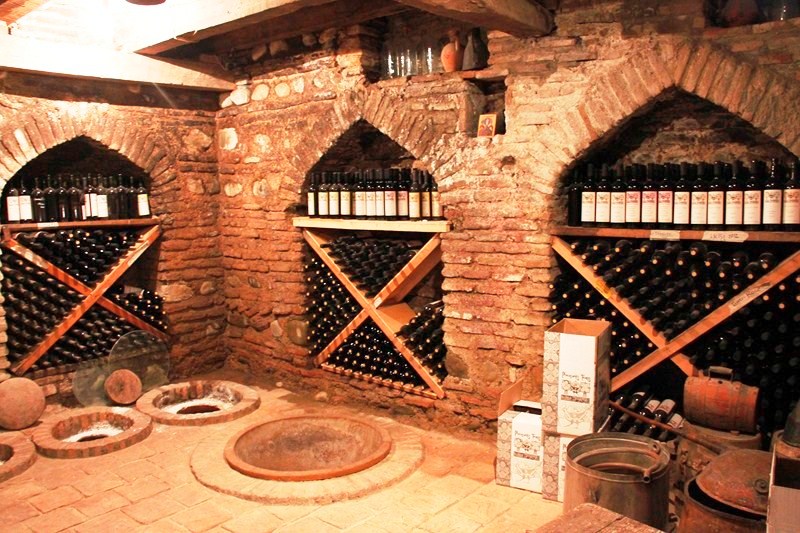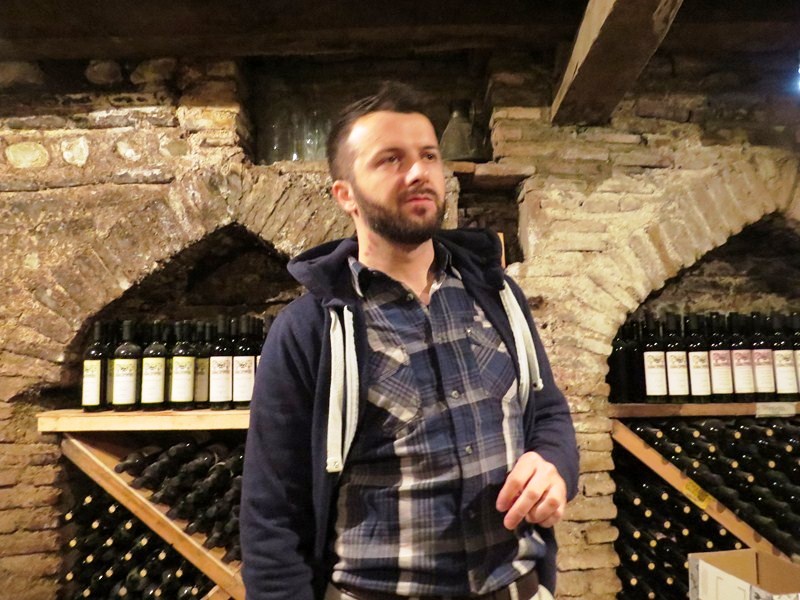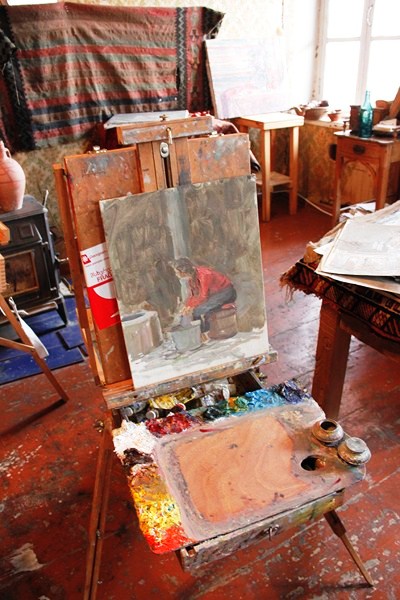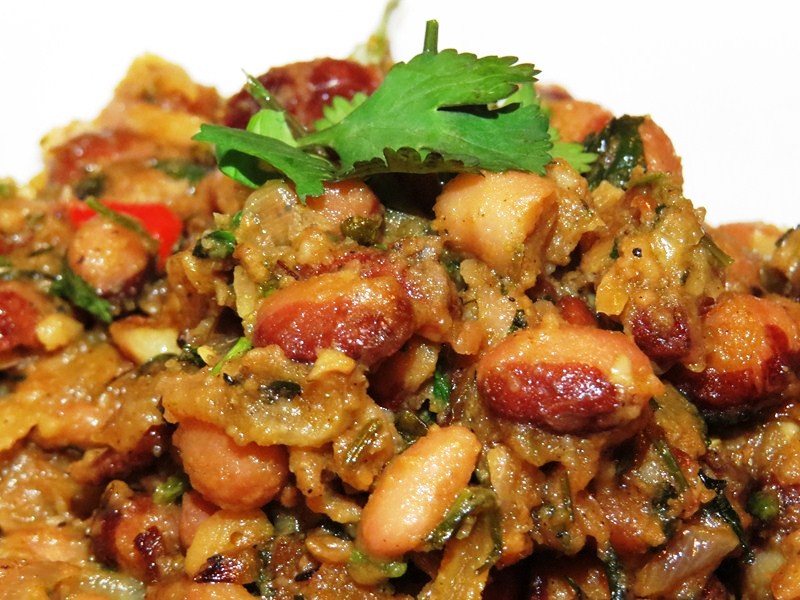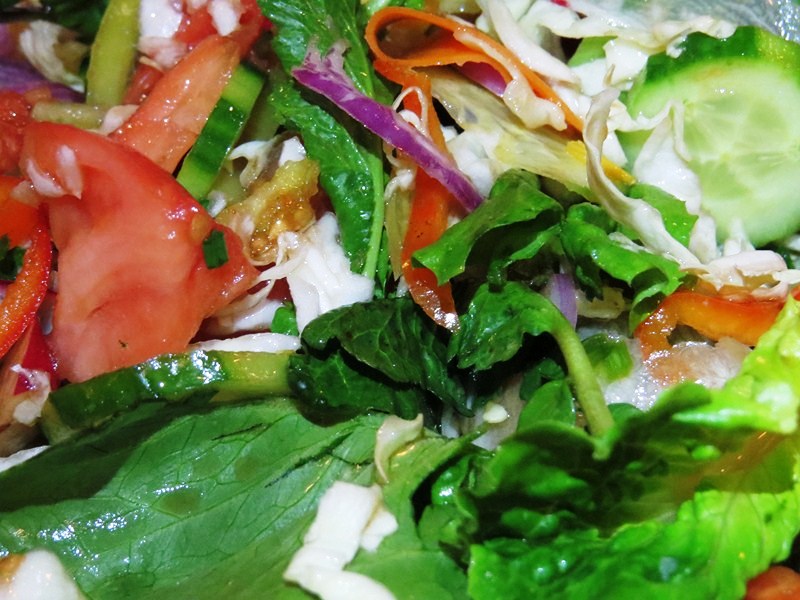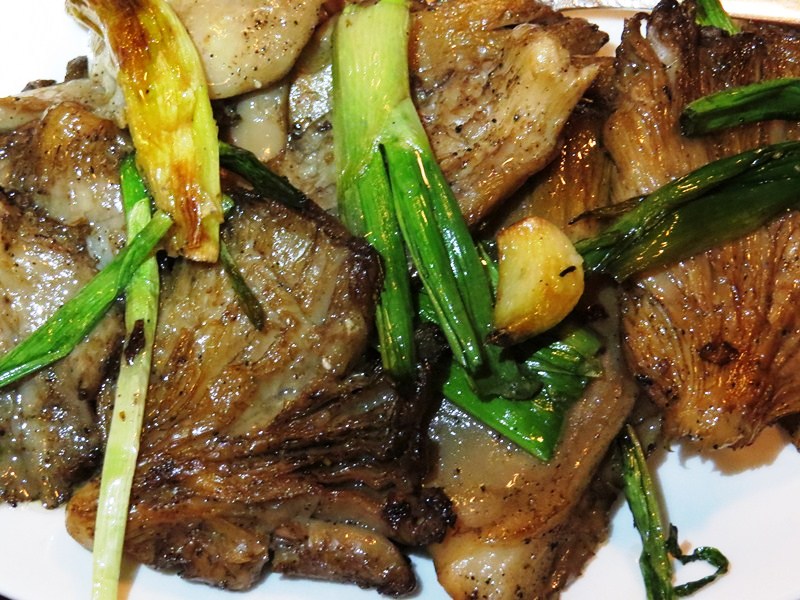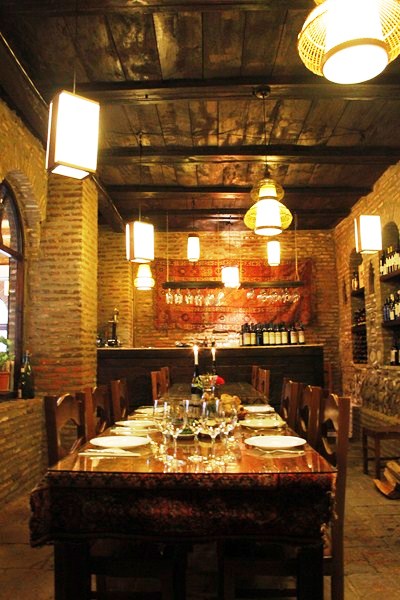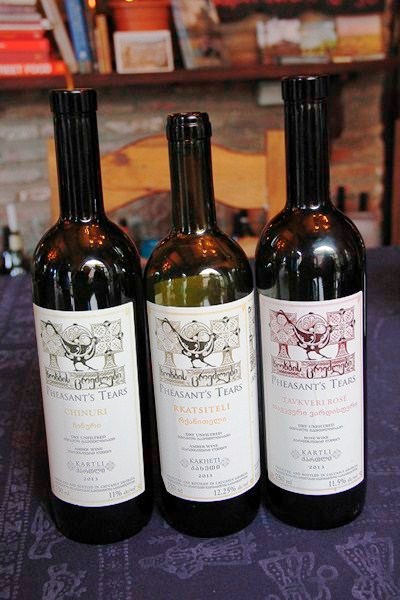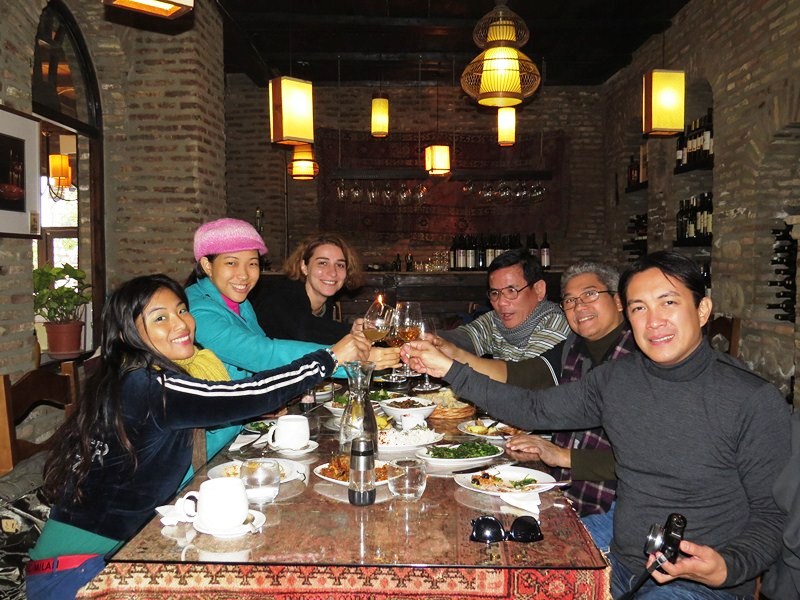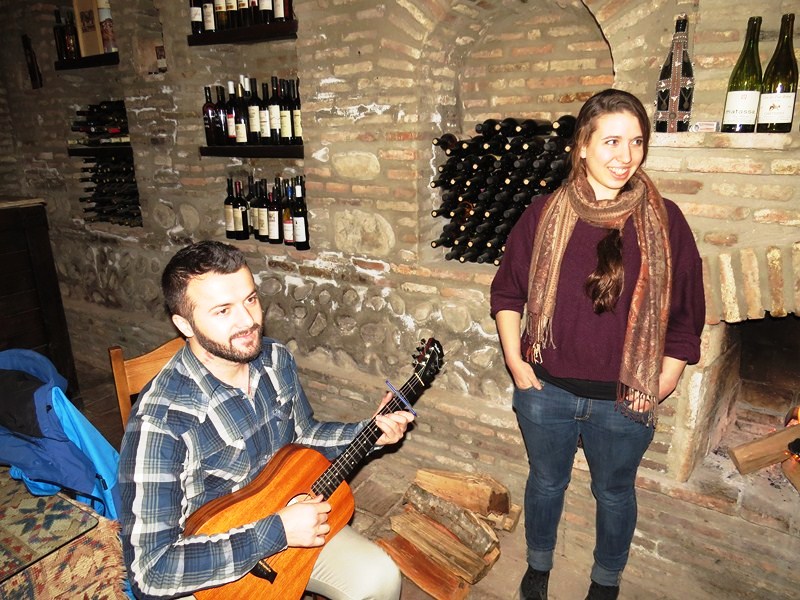(All photos courtesy of Ms. Riva Galveztan)
The endpoint of our GNTA-sponsored walking tour of Sighnaghi town proper was Pheasant’s Tears where Buddy, Pancho, Riva, Mel and I, together with our Georgian guide Sopho Makashvili, were to have lunch and sample some Georgian wine. Pheasant’s Tears, a Georgian winery that produces artisanal natural wines according to ancient Georgian traditions, was founded in 2007 by John H. Wurdeman V and Gela Patalishvili.
John, an en plein air painter and the first American graduate of the prestigious Surikov Institute in Moscow, first came to Georgia in 1996 and bought a house in Sighnaghi the following year. In 1998, he relocated to Georgia full time. Gela, a winegrower whose family’s connection with wine goes back 8 generations, met John in 2005 when John was painting in a vineyard near the highway in the Alazani Valley near the village of Tibaani. They decided to work together and set up Pheasant’s Tears. The name “pheasant’s tears” refers to a Georgian story in which only the very best wines are good enough to make a pheasant cry.
Upon arrival, we were welcomed by Mr. Shergil Pirtskhelani, Pheasant’s Tears sommelier (wine steward), who brought us all to the winery’s basement cellar and gave us a brief introduction on ancient Georgian wine making traditions. All wines are fermented in kvevri, traditional clay amphorae which are lined with organic beeswax and buried into the ground. Kvevri wines seem to age faster than conventional wines.
Fermentations using naturally occurring yeast is employed and slightly different techniques are used to make each of the wines. Some have moderate skin contact while others have minimal (3 weeks to 6 months). Stems are included in the wine making process. In 2013, the ancient traditional kvevri wine-making method was inscribed on the UNESCO representative list of “Intangible Cultural Heritage of Humanity.”
After this brief introduction, Shergil then toured us around John’s (who was at Tokyo during our visit) studio which houses his books, painting paraphernalia (easels, paint, brushes, etc.) and artwork that reflects John’s overflowing passion and love for Georgia.
It was now time for lunch and we all went down to the private dining room which had a warming fireplace. The supra (Georgian feast) before us, prepared with fresh ingredients from the local markets by head chef Gia Rokashvili, a local Sighnaghian, was a take on traditional Georgian cuisine with an eye towards wine and food pairings, all designed to accommodate both veggie (Sopho and Riva belonged to this category) and meat lovers.
On the menu was matsoni (strained water buffalo yoghurt with red pepper); curds with black pepper and green onions; fresh vegetable salad, (radish, carrots, arugula, cabbage, onions, olives, tomatoes and cucumber in sunflower seed oil); mushrooms sautéed with garlic; kidney beans with wild thyme; omelet (radish greens, onions, pepper and broccoli); roast potatoes with tkemali (wild plum sauce) and stewed veal with vegetables.
While dining, Shergil poured 3 kinds of Georgian wine in our respective wine glasses for us to taste, helping us understand the roots that these wines came from. We started with Chinuri 2013, the lightest, crispest white wine in the line-up; followed by Rkatsiteli 2011 which was spicy and exotic on the nose, with warm peachy notes; and Tavkvevri 2013, a vivid, juicy and berryish red wine. He also assumed the role of tamada (Georgian toastmaster) as we sampled each of these wines.
Shergil happened to be a music teacher who teaches folk and sacred songs from Georgia with traditional Georgian stringed instruments. After our magnificent repast, he regaled us by playing the guitar while Ms. Enek Peterson, an American from Boston (Massachusetts), serenaded us with the popular spiritual song “Hallelujah” (written by Canadian singer-songwriter Leonard Cohen in 1984) plus a Georgian song. This capped a wonderful afternoon filled with great art, delightful Georgian cuisine and soul-searching music.
Pheasant’s Tears: 18 Baratashvili St., Sighnaghi, Georgia 4200. Tel: 0 355 23 15 56. Mobile number: +(995 599) 53-44-84. E-mail: jwurdeman@pheasantstears.com. Website: ww.pheasantstears.com.
Georgia National Tourism Administration: 4, Sanapiro St, 0105, Tbilisi, Georgia. Tel: +995 32 43 69 99. E-mail: info@gnta.ge. Website: www.georgia.travel; www.gnta.ge.
Qatar Airways has daily flights from Diosdado Macapagal International Airport (Clark, Pampanga) to Tbilisi (Republic of Georgia) with stopovers at Hamad International Airport (Doha, Qatar, 15 hrs.) and Heydar Aliyev International Airport (Baku, Azerbaijan, 1 hr.). Website: www.qatarairways.com.

